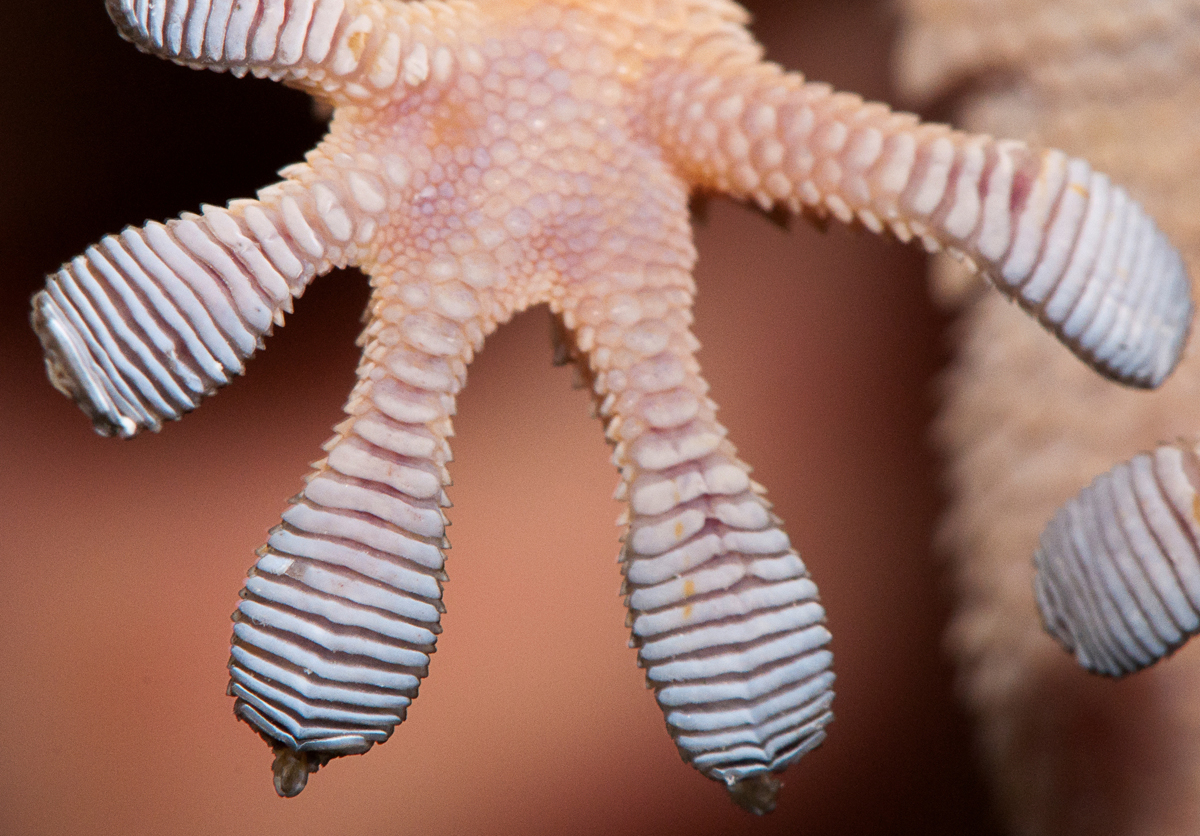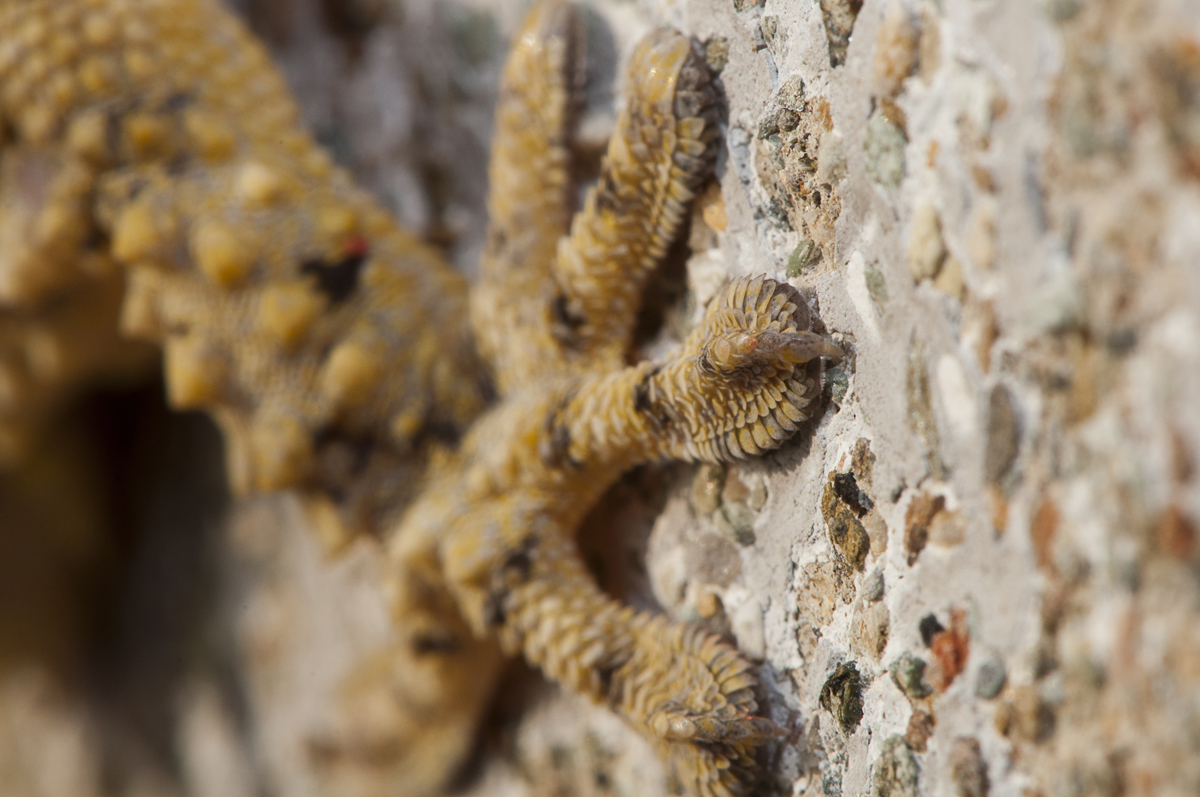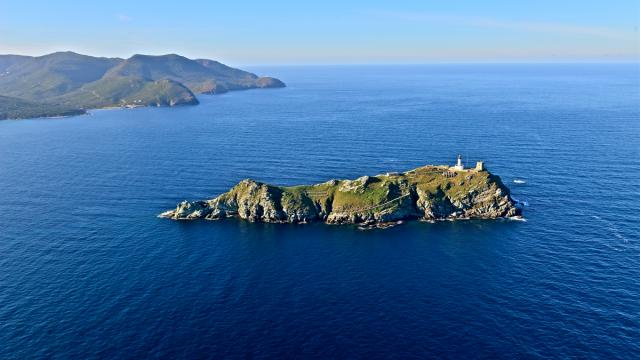The island of Giraglia is a windswept pile of rocks that sits within eyeshot of the northern tip of Corsica in the Mediterranean sea. Humans never lived here, but two types of geckos do. One runs free; the other’s a prisoner — and their story may help unravel a longstanding evolutionary mystery.
Giraglia island. Photo Courtesy Michel-Jean Dealugerre.
Giraglia island has just three man-made structures: A lookout tower, built in 1573 to keep watch for pirates; a lighthouse, built in the 1800s to assist with shipping navigation; and a power plant, built in the 1950s to house the generator that replaced the guy who once ran the lighthouse.
With the power plant came the Moorish geckos — big, armoured, desert-hardy things native to western Europe and northern Africa, which gecko biologist Anthony Russell of the University of Calgary describes as “vigorous colonizers and vicious predators”. Moorish geckos engage in fierce territorial disputes, and have a knack for outcompeting (and devouring) other geckos everywhere they’re introduced.

A Moorish gecko on prasinite. Photo Courtesy A. Leoncini.
But in the 60-odd years that Moorish geckos have been on Giraglia island, there has been no pillaging, conquering or wholesale slaughter of the natives to speak of. (A population of smaller, European leaf toed geckos also lives on the island.) In fact, the Moorish geckos have yet to leave the power plant, and they probably never will. They’re being held hostage, thanks to an unfortunate clash between geology and evolution.
It was Michel-Jean Delaugerre, a biologist with the Marine Conservancy in Corsica, who first noticed something odd about life on Giraglia island, during his routine field surveys: A small population of Tarentola mauritanica, better known as Moorish geckos, seemed confined to a single, concrete structure. Meanwhile, Euleptes europaea, the European leaf toed gecko, has the run of the island, unperturbed by its reclusive neighbours.
“Jean Michel contacted me years ago, because he’d noticed these [Moorish] geckos were not able to leave this particular spot on the island, and he knew I worked on them,” Russell tells me. “I think if this was taking place on a mainland, in a mosaic of environments, you’d never have noticed what was happening.”

Close up of a Moorish gecko’s toepads. Photo Courtesy A. Leoncini.
So, what was happening? Turns out, the same sticky toe pads that help Moorish geckos cling to concrete utterly fail when it comes to walking around on Giraglia, an island composed of prasinite, a crumbly schist rock that coats everything in a thin layer of grime. “If you drag your finger over the rock, it gets covered in dust,” Russell said.
Wide, adhesive strips composed of billions of tiny, hair-like structures, the Moorish geckos’ toe pads are designed to be self-cleaning. But when tip-toeing around on Giraglia island, these pads quickly become saturated by microscopic crystals flaking off the rocks. At which point, the toe pads are a bit like a dirty cleaning cloth rubbing about on a dirty surface. The geckos are not about this.
“They actually freak out,” Russell says.
The European leaf-toed geckos, which are adapted to live on Giraglia island, sport smaller adhesives — just two little sticky spots located at the tip of each toe. When these pads are needed for climbing, the geckos can use them. But when the going gets dusty, the toe pads roll up and the animals rely on their claws.

Moorish gecko hind foot on concrete. Photo Courtesy A. Leoncini.
The luckless Moorish geckos cannot use their claws and toe pads independently, and the only place they can keep their pads clean on Giraglia island is the concrete power plant they hitched a ride over on. It would seem there are enough insects and spiders here to keep them well-fed.
These two toe pad designs are not restricted to a single desolate, Mediterranean island. Each pattern is found worldwide, in countless species of geckos. Each is believed to have evolved independently at least five times. But until Russell and Delaugerre’s work on Giraglia island, which is now published in the Journal of Zoology, we couldn’t hazard a guess why one might be better than the other.
Russell suspects that the Moorish gecko’s larger, toe-spanning pads make for better climbing in dust-free environments. But on a place like Giraglia island, it makes more sense to be light-footed and versatile. It’s a hypothesis that can now be followed up on with controlled experiments, and that may have applications in designing better artificial adhesives, whether for sticking things to the walls of the International Space Station, or making sure those strapless bras stay up.
“We assumed these patterns repeat for a reason, but we haven’t known what the performance advantage might be,” Russell says. “I think we can take the message from the island, and move on to a lot of other things.”
The Moorish geckos, however, will be staying put.
